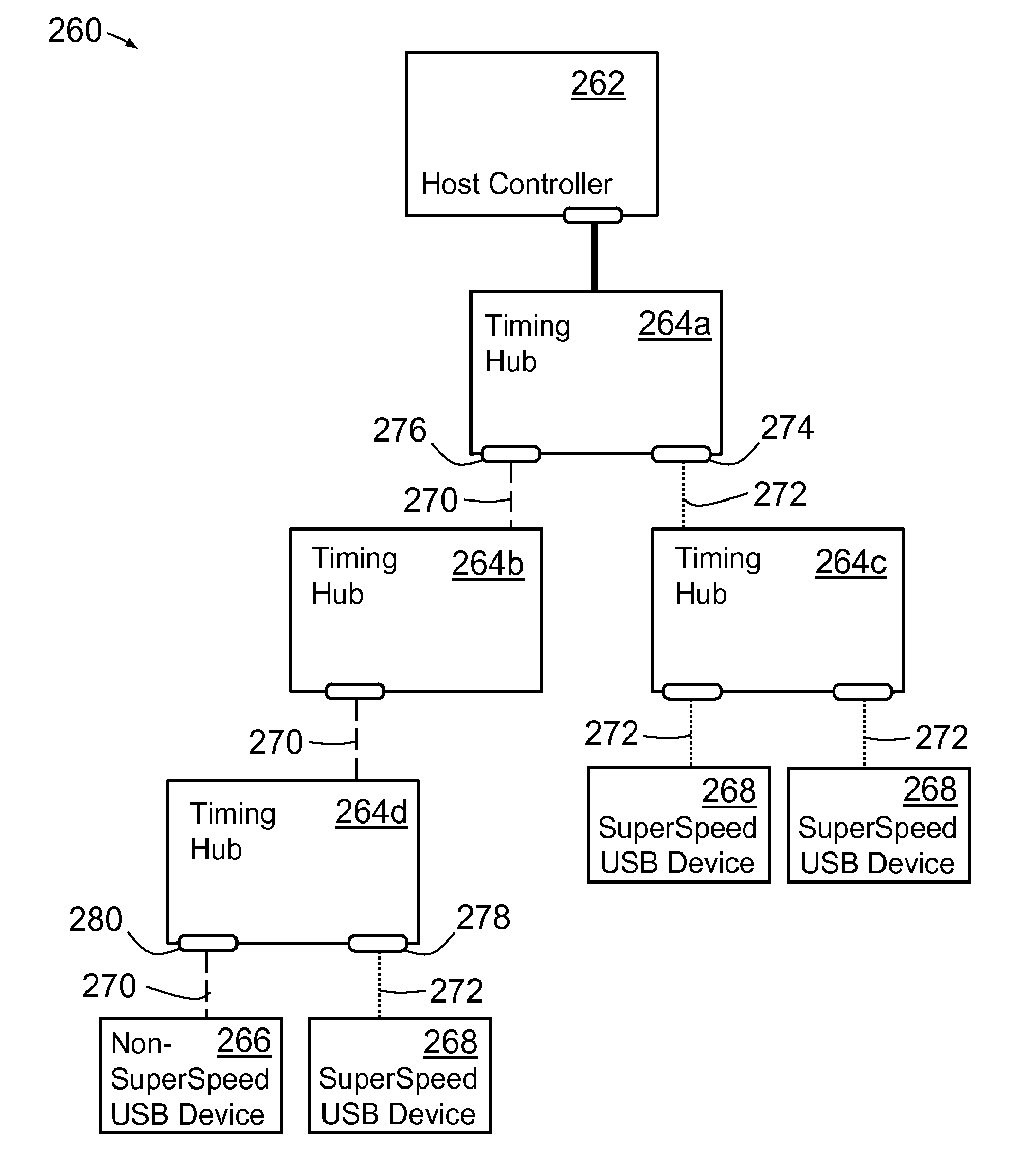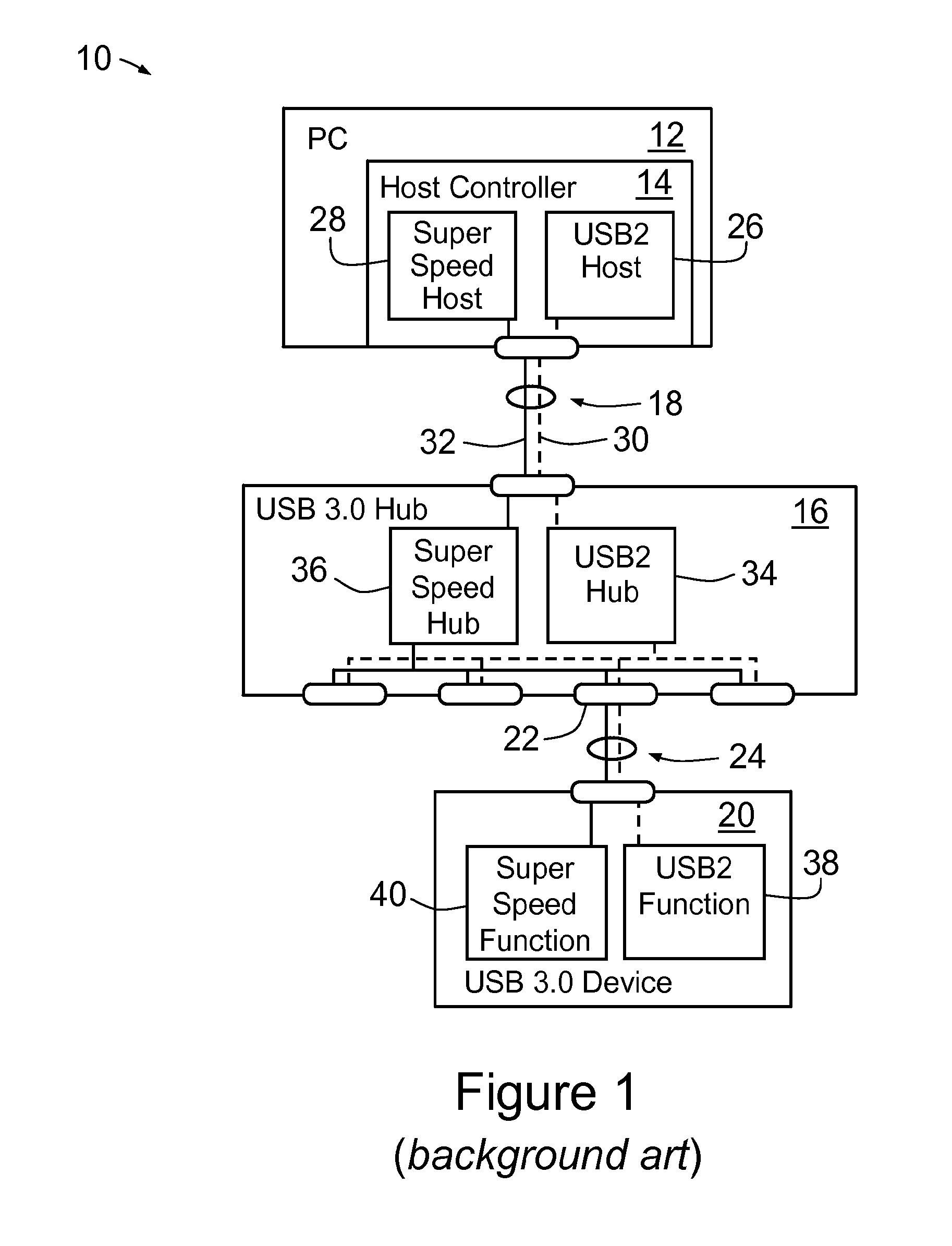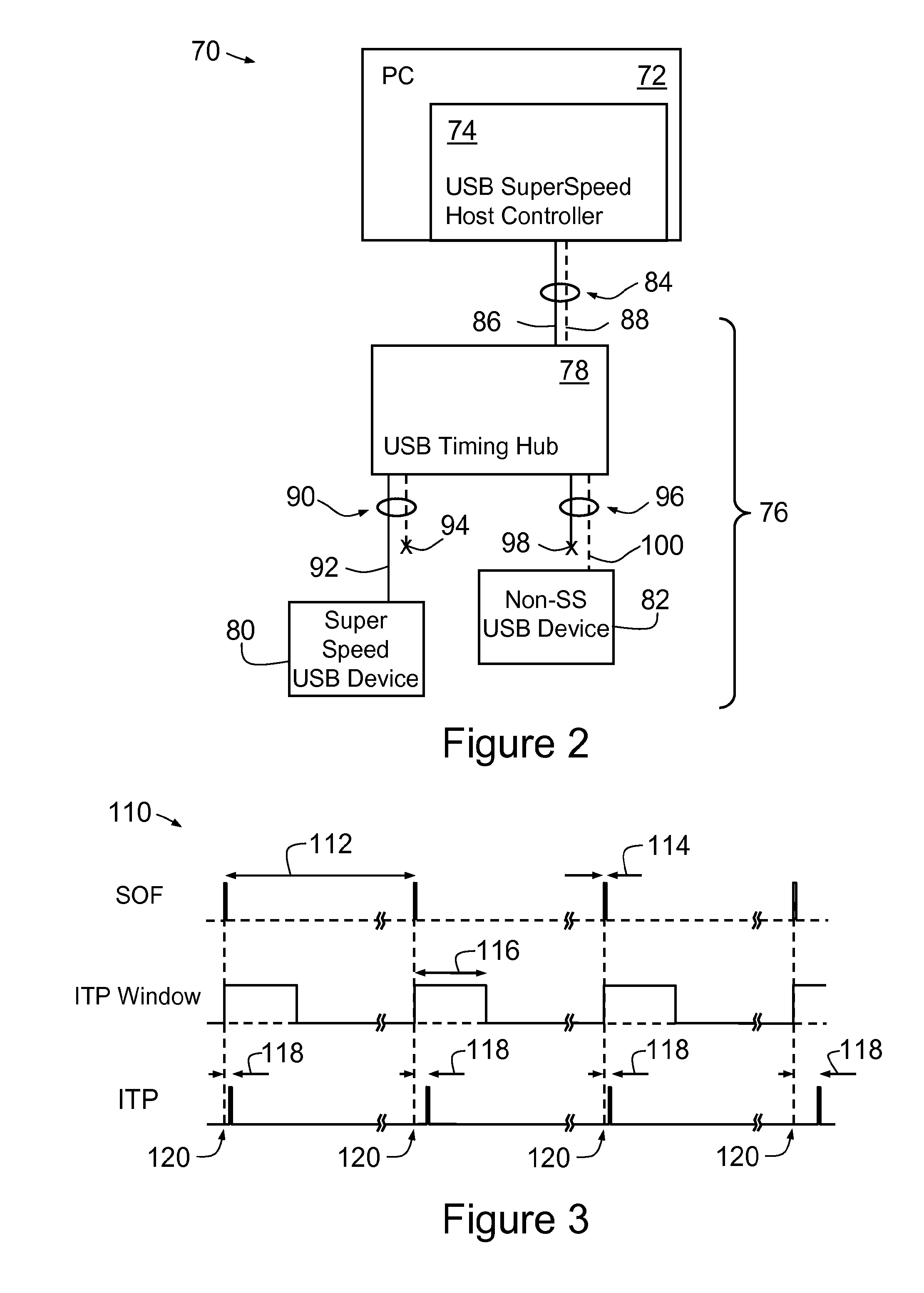Synchronous network of superspeed and non-superspeed USB devices
a network and super-fast technology, applied in the direction of instruments, data conversion, generating/distributing signals, etc., can solve the problems of usb 2.0 specification lacked a mechanism for synchronising devices to any great precision, inter-device synchronization is not addressed, usb 2 lacks a synchronization mechanism
- Summary
- Abstract
- Description
- Claims
- Application Information
AI Technical Summary
Benefits of technology
Problems solved by technology
Method used
Image
Examples
Embodiment Construction
[0207]A synchronised USB according to a first embodiment of the present invention is shown schematically at 70 in FIG. 2, provided in a personal computer (PC) 72. PC 72 includes a SuperSpeed USB Host Controller 74 that is connected to a network 76 containing a SuperSpeed USB Timing Hub 78, a SuperSpeed USB device 80 and a non-SuperSpeed USB device 82. USB Host Controller 74 is connected to USB Timing Hub 78 by compound USB cable 84 comprising SuperSpeed conductors 86 and non-SuperSpeed conductors 88.
[0208]USB Timing Hub 78 supports attachment of both a SuperSpeed USB device 80 and non-SuperSpeed USB device 82, so both SuperSpeed conductors 86 and non-SuperSpeed conductors 88 carry signals between SuperSpeed USB Host Controller 74 and USB Timing Hub 78.
[0209]SuperSpeed USB device 80 is connected to USB Timing Hub 78 by SuperSpeed-compliant compound USB cable 90, comprising SuperSpeed conductors 92 and non-SuperSpeed conductors 94. As device USB 80 is a SuperSpeed USB device, USB Timi...
PUM
 Login to View More
Login to View More Abstract
Description
Claims
Application Information
 Login to View More
Login to View More - R&D
- Intellectual Property
- Life Sciences
- Materials
- Tech Scout
- Unparalleled Data Quality
- Higher Quality Content
- 60% Fewer Hallucinations
Browse by: Latest US Patents, China's latest patents, Technical Efficacy Thesaurus, Application Domain, Technology Topic, Popular Technical Reports.
© 2025 PatSnap. All rights reserved.Legal|Privacy policy|Modern Slavery Act Transparency Statement|Sitemap|About US| Contact US: help@patsnap.com



